
CHECK OUT THIS ARTICLE IN VIDEO FORMAT ON YOUTUBE!
Family Guy, created by Seth MacFarlane in 1999, is a surreal and darkly humorous animated sitcom, lampooning American culture. The series has won three Emmy & 3 Annie awards.
During 2020, as situations rapidly changed, the team needed to adapt and work remotely, with both remote talent and remote creatives.
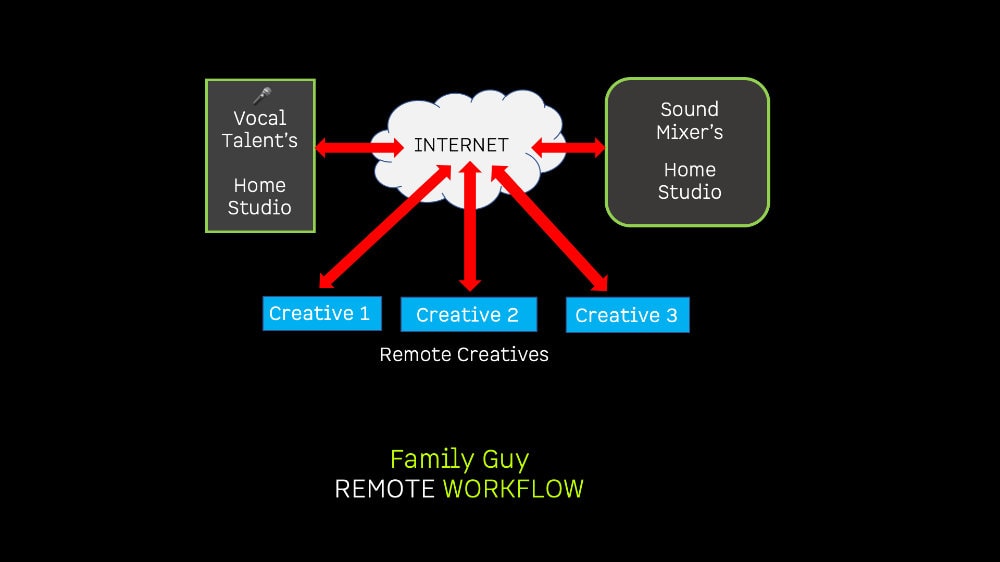
Workflow Design
The team at Source Elements worked with Disney to design and integrate the same workflow as with a studio control room and a live room, so:
- the talent could be perfectly recorded directly to Pro Tools, regardless of internet bandwidth issues
- the creatives could openly converse with each other and with the audio engineer (just like being together in a control room)
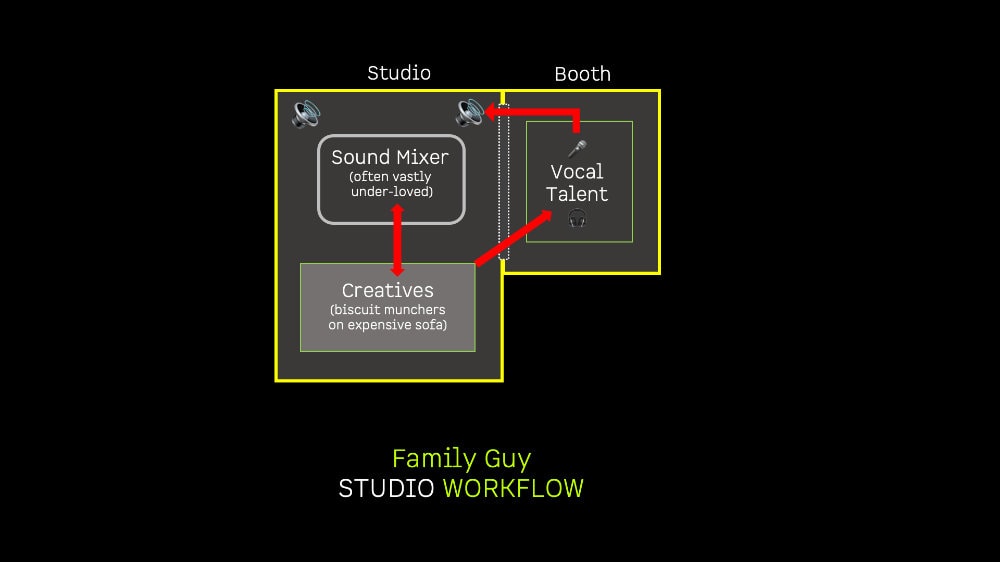
- the creatives could directly talk to the talent with a dedicated talkback button, as if they were in the live room
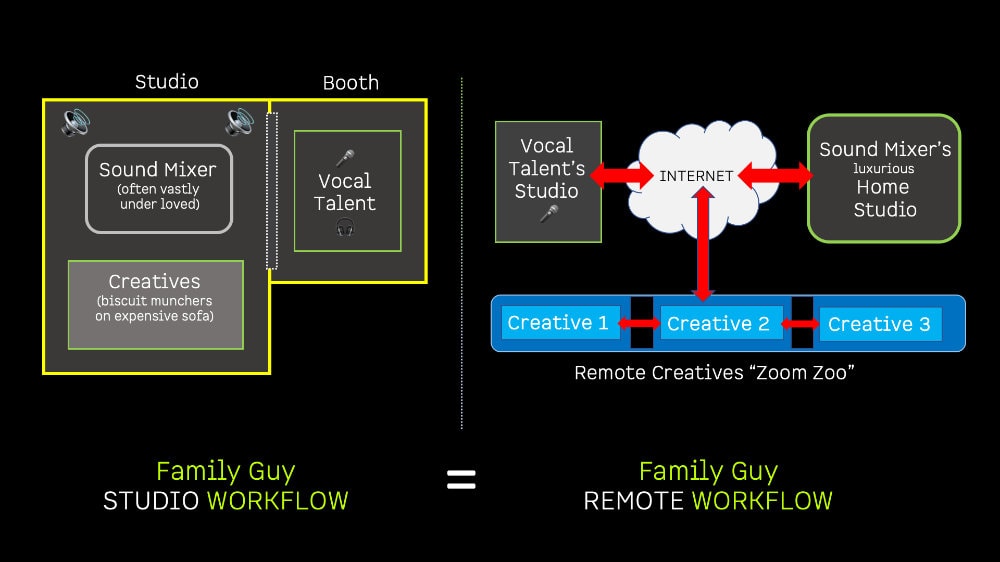
To make Family Guy, in traditional animation workflow fashion, the voices are recorded first, for the animators to work to.
The voice talent is recorded remotely from the studios, using Source-Connect Standard at the talent end and Source-Connect Pro at the engineer’s end.
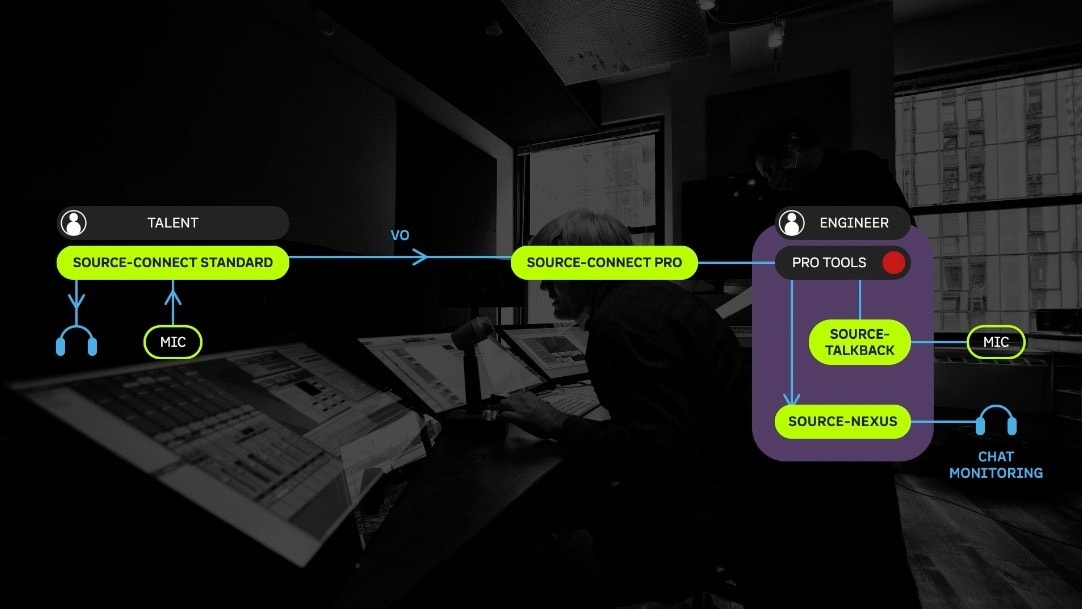
This gives the highest quality recording possible from the remote end and allows the security of “an auto-restore” session, where nothing is ever missed if there are any internet hiccups.
Each end has the Source-Connect Q Manager.
The talent’s Q Manager checks the sent audio, and the studio’s Q Manager confirms that the engineer is receiving all of this information by comparing the data with its recorded audio files folder.
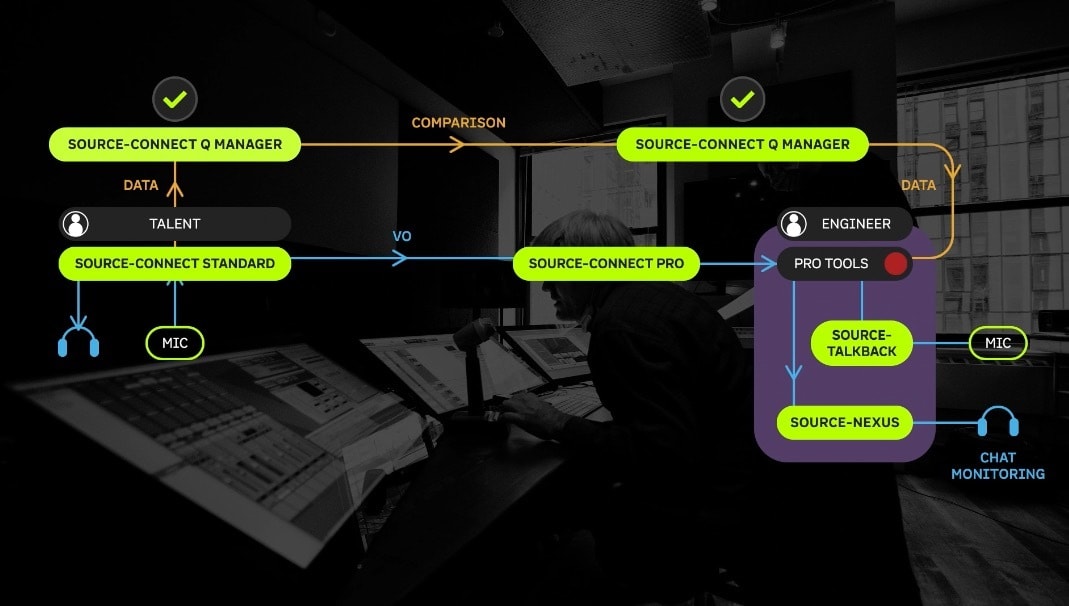
If there is an internet hiccup and some audio packets are missed (dropout), it alerts the Talents’ Q Manager, which then sends the missing audio data to the Engineer’s Audio files folder via an ftp server, without the Engineer having to do anything whatsoever.
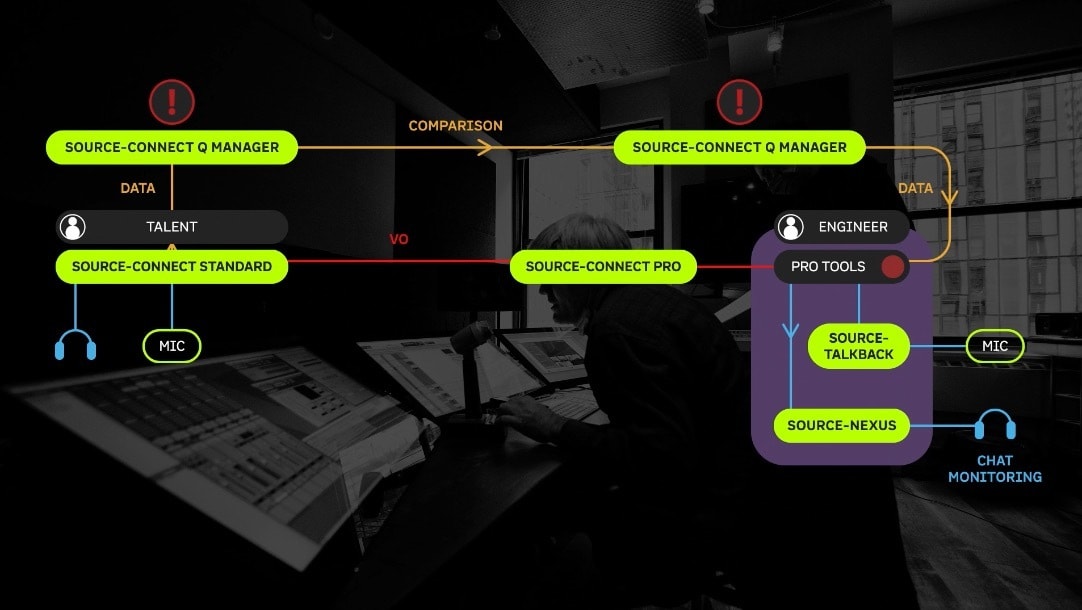
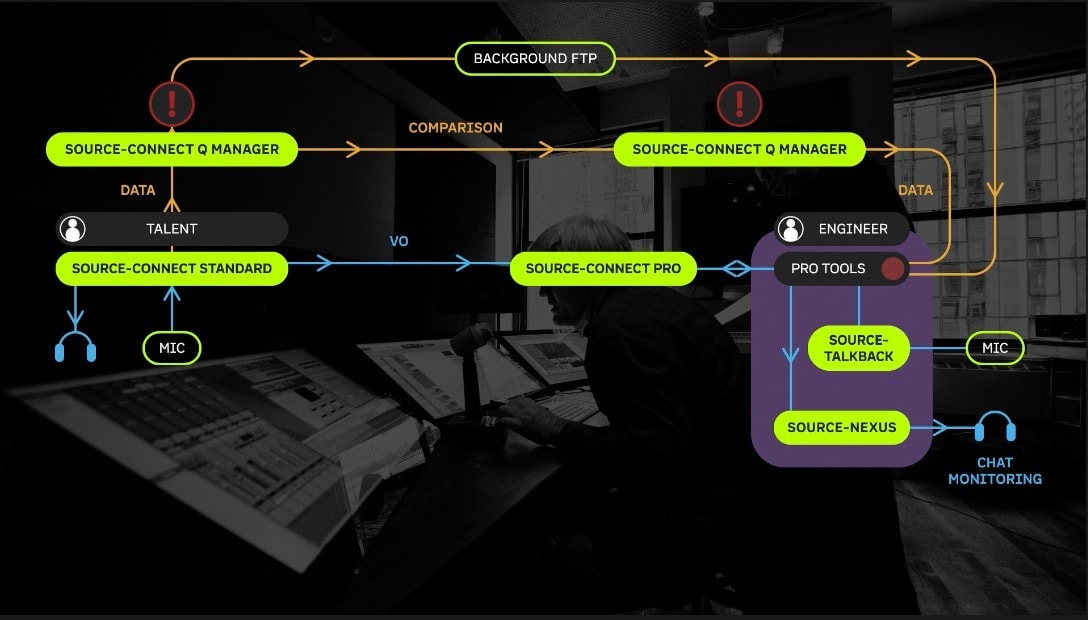
Total peace of mind from the Q Manager, your digital best buddy that’s always watching your back.
Talkback
The Engineer can talk to the talent via the reverse feed of Source-Connect (as it’s fully duplex).
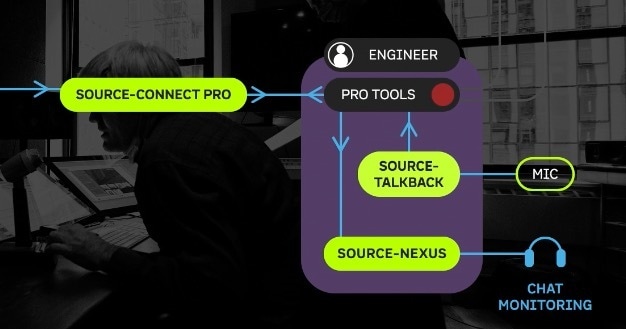
To activate his talkback mic in Pro Tools, he uses Source-Talkback, a small highly efficient plug-in that he places on his talkback microphone input, and his monitoring output channel…
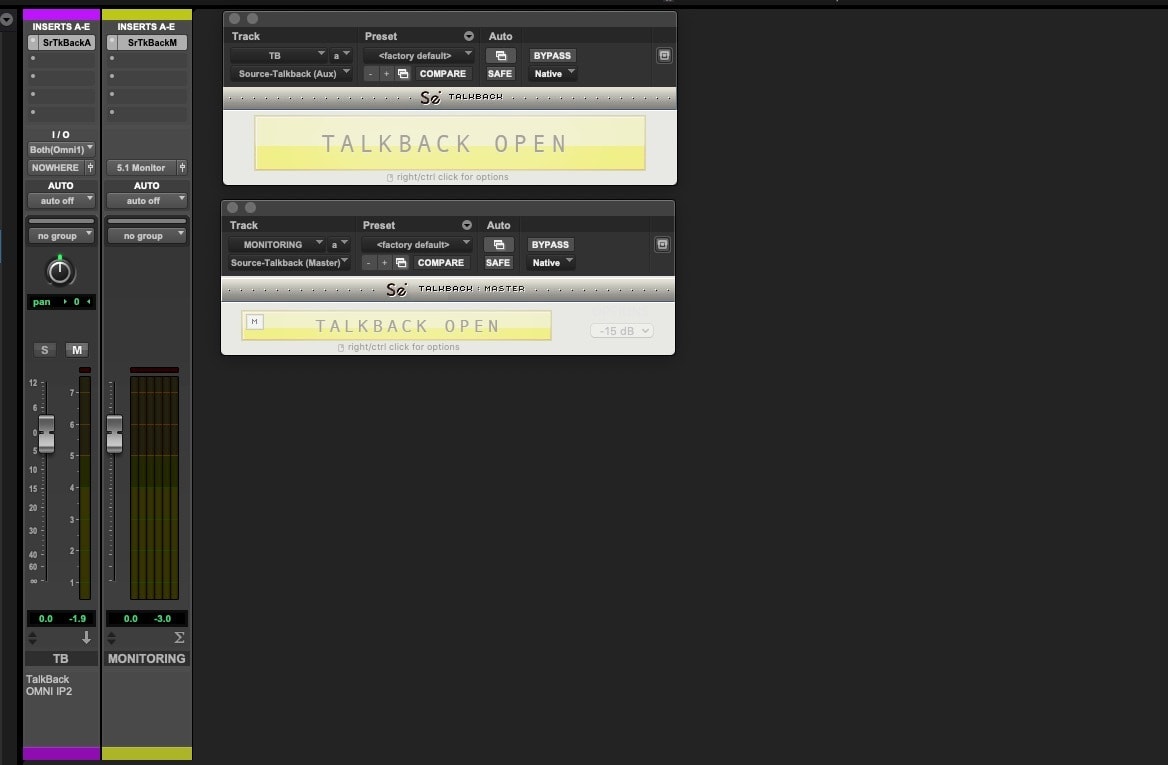
…so that when the talkback is activated, his monitoring dims by a user preset-able amount.
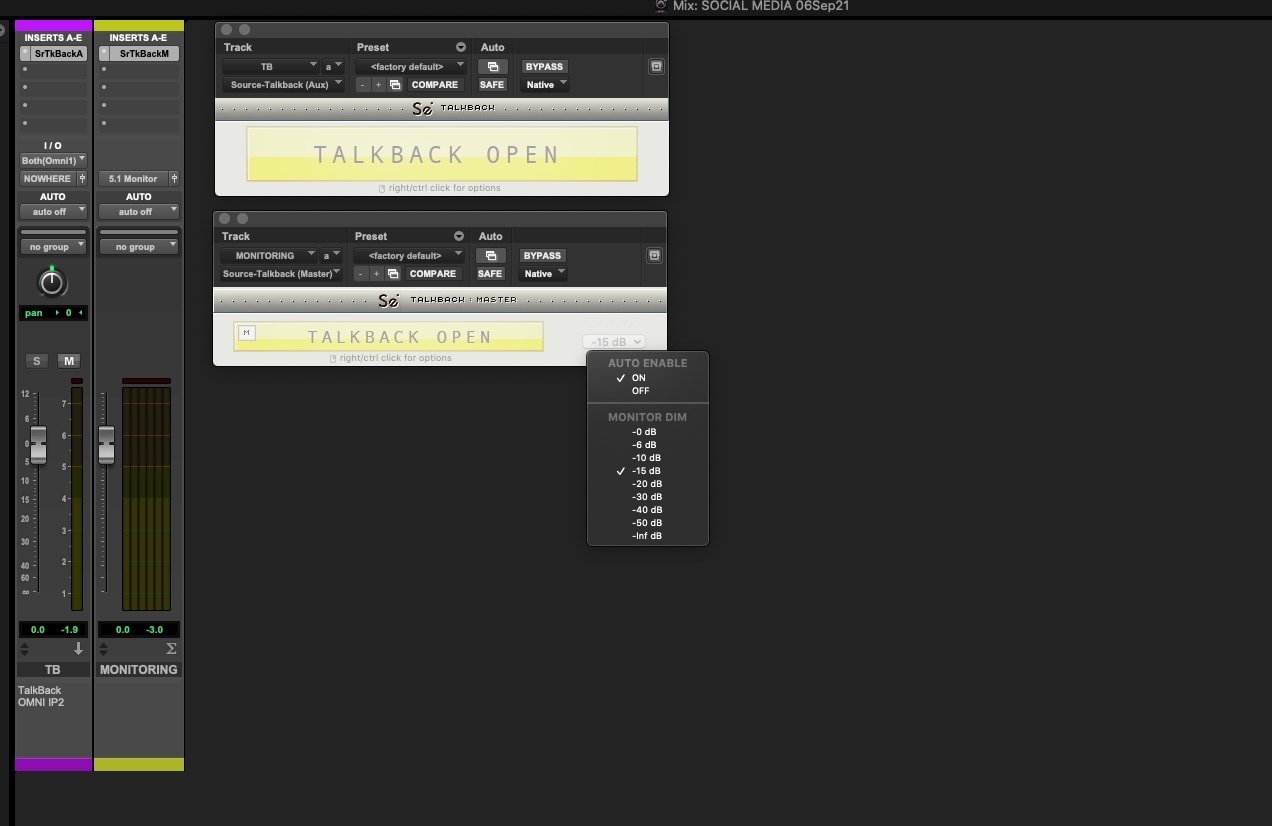
The talkback has three modes:
- momentary, press and hold to talk (“oi – that’s my biscuit”)
- latched, press to open & press again to close (“can we discuss which biscuit I like best?“)
- transport, automatically opens when the transport stops (when it’s best not to have a mouthful of biscuits at all!)
Now let’s consider the creatives that direct the voice record sessions and make all the important decisions (and eat most of the biscuits).
They need to be able:
- to talk to each other
- to talk to the audio engineer for technical approval (and to tell him not to eat all the best biscuits)
- to hear the talent with as low latency as possible
To do this we make an internet Source-Now room, a high-quality low latency chrome browser chat-room where all the participants audio is meshed together (i.e. you are not fed yourself back) to enable easy conferencing.
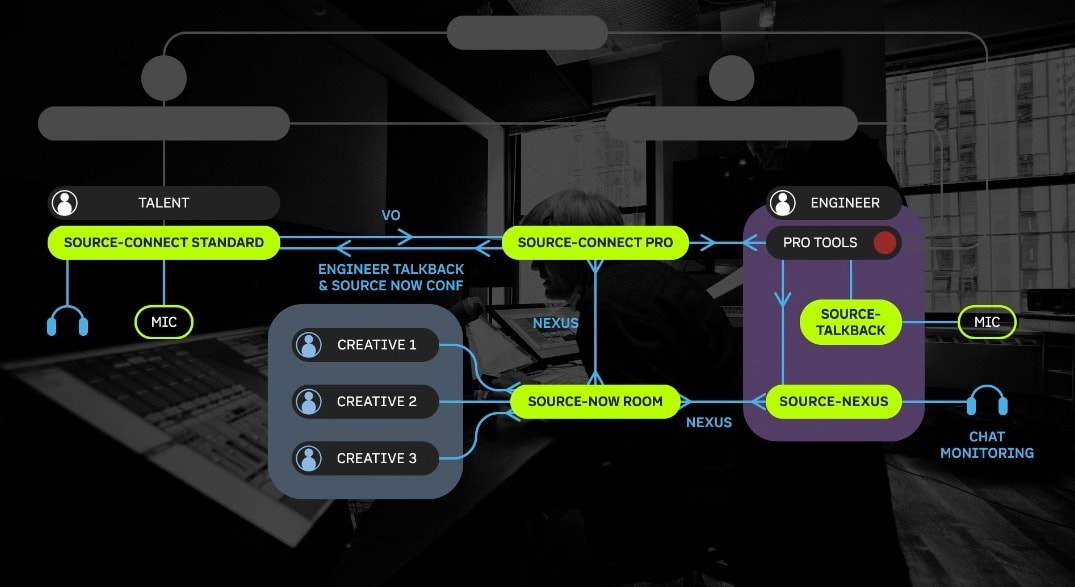
This enables the creatives to direct the talent with “their collective creative wisdom” and to discuss which biscuits are best.
The Creatives also like to have “a private chat room” where they can converse amongst themselves (or with the audio engineer) and not disrupt the talent. They have chosen Zoom for this (due to their familiarity).
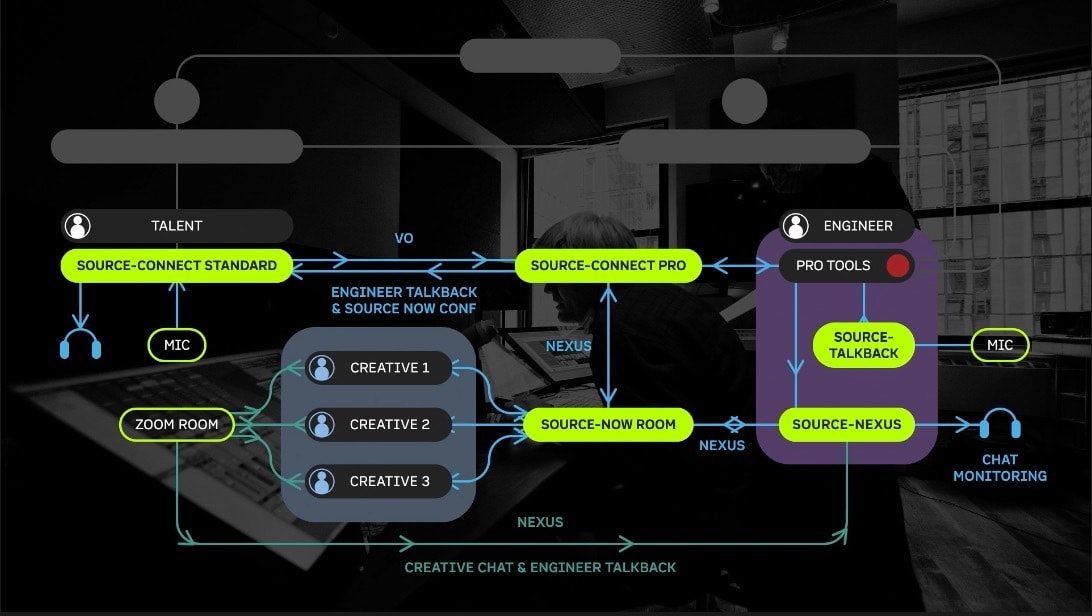
They are all connected to this “Zoom Zoo”, as is the audio engineer (but he doesn’t share his biscuits though!).
by Mike Aiton


Source Elements (UK)

